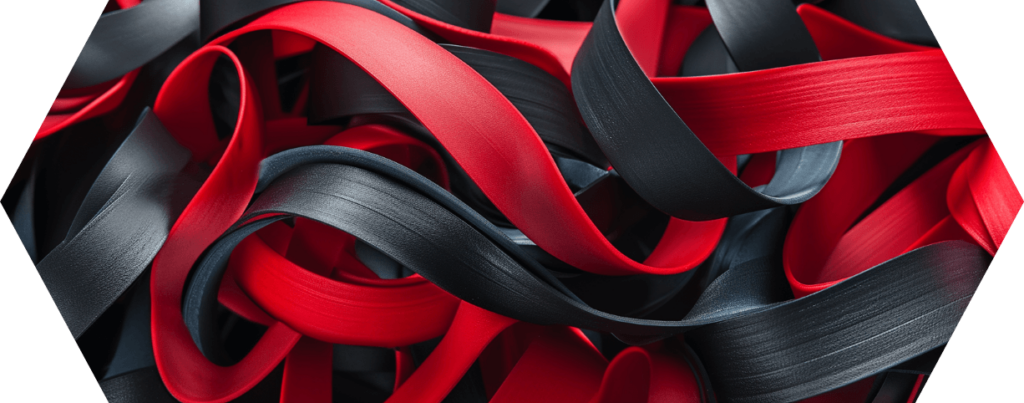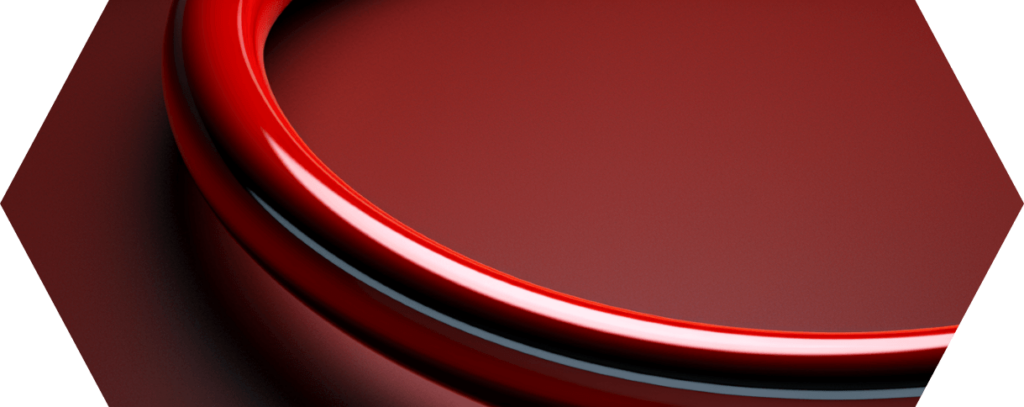EPDM elastomer
EPDM: Everything you need to know
EPDM, short for ethylene propylene diene monomer, is a synthetic rubber that plays an important role in numerous industrial and everyday applications.
In this comprehensive guide, we will delve deep into the world of elastomers, exploring their properties, applications, manufacturing processes and future prospects.
EPDM has become indispensable in many industries due to its versatile properties such as weather resistance, heat and ozone resistance as well as its excellent insulating properties.
From the automotive industry to construction and household products, EPDM has proven its versatility and efficiency.
| Aspect | Aspect Detail | Aspect description |
| Chemical composition | Ethylene, propylene, diene monomer | A terpolymer known for its elasticity and resistance. |
| Physical properties | Temperature resistance | Effective from -50°C to +150°C, retains flexibility at extreme temperatures. |
| Environmentally friendly | Recyclable | Can be processed into granulate and reused in new products. |
| Main applications | Automotive industry, construction industry, water treatment | Seals, hoses, roofing membranes, membranes in water treatment plants. |
| Market growth | Rising demand | Especially in green construction methods and renewable energies. Forecast growth of over 7% for green roofs. |
| Comparison with other materials | Superior in weather resistance | Better than NBR and SBR in terms of ozone and UV resistance. |
| Innovation potential | Technological advances | Development of more environmentally friendly and higher-performance EPDM made from bio-based raw materials. |
REQUEST O-RINGS QUICKLY AND EASILY?
Almost any dimension available
Offer received in record time
No minimum order quantities or minimum item values
One contact for all concerns
#1 What is EPDM? Basics and properties
EPDM stands for ethylene propylene diene monomer, a synthetic rubber known for its exceptional resistance to extreme weather conditions, heat, ozone and acids.
These properties make ethylene rubber an ideal material for a wide range of applications.
Chemical composition and physical properties:
- Chemical structure: It consists of ethylene, propylene and a diene monomer, which enables cross-linking.
- Physical properties: It is characterized by its high elasticity, good ageing resistance and excellent heat resistance. EPDM remains flexible at temperatures from -50°C to +150°C.
Comparison with other synthetic rubbers:
- NBR (nitrile butadiene rubber): While NBR is better suited for oil and fuel resistance, EPDM outperforms NBR in terms of weather and ozone resistance.
- SBR (styrene-butadiene rubber): EPDM offers better heat and ageing resistance than SBR.
Facts and statistics:
- It was first produced in the 1960s.
- The maximum storage time according to DIN 7716 is 7 years

#2 Applications of EPDM in various industries
EPDM has proven to be indispensable in numerous industries due to its excellent properties. Here are some of the most important applications:
1. in the automotive sector:
- Seals and hoses: EPDM is often used for door and window seals, radiator hoses and air filter seals. Its resistance to temperature fluctuations and chemical influences makes it ideal for these applications.
- Insulation: It is also used as an insulating material in vehicles to reduce noise and provide efficient thermal insulation.
2. in the construction industry:
- Roof waterproofing: EPDM roofing membranes are popular due to their durability and weather resistance. They offer long-term protection against moisture and UV radiation.
- Window and façade seals: It is used for façade and window seals to make buildings more energy efficient.
3. other important applications:
- Water treatment: EPDM is used for seals and membranes in the water treatment industry.
- Gardening and landscaping: EPDM films are used for ponds and artificial watercourses because they are environmentally friendly and durable.
Case study:
- An example from the automotive industry shows how the use of EPDM-based seals has significantly extended the service life of vehicle components and reduced maintenance costs.

#3 EPDM manufacturing process
The production of ethylene rubber is a complex process that requires technological precision in order to guarantee the unique properties of this material.
Overview of the manufacturing process:
- Polymerization: EPDM is produced by the polymerization of ethylene, propylene and a diene monomer. This process takes place in special reactors in which the monomers react with each other using catalysts and under controlled conditions.
- Shaping and vulcanization: The resulting polymer is then shaped into various forms and vulcanized, a chemical process that strengthens the molecular bonds and gives the material its final properties.
Raw materials and production techniques:
- Raw material quality: The quality of the raw materials used plays a decisive role in determining the properties of the end product.
- Innovative techniques: Advances in production technology have led to more efficient and environmentally friendly manufacturing processes.
Environmental compatibility and sustainability:
- Reduction of waste: Modern manufacturing processes are designed to minimize waste and maximize energy efficiency.
- Recyclability: It is recyclable, which further increases its environmental compatibility.
Facts and figures:
- The production process has developed significantly in recent decades, which has led to an increase in material quality.
- The demand for environmentally friendly elastomers has increased in recent years, prompting the industry to develop more sustainable production methods.

#4 Advantages and disadvantages of EPDM
Like every material, EPDM also has its advantages and disadvantages, which should be taken into account when choosing the right material for a particular application.
Advantages of EPDM:
- Weather resistance: It retains its properties under extreme weather conditions, whether in strong sunlight, frost or rain.
- Long service life: It is known for its longevity, often over 20 years, making it a cost-effective solution.
- Flexibility: It remains flexible even at low temperatures, making it suitable for a wide range of applications.
- Ecological sustainability: It is recyclable, making it an environmentally friendly option.
Disadvantages of EPDM:
- Sensitivity to certain chemicals: It is not resistant to petroleum products and some other chemicals.
- Initial investment costs: The cost of EPDM-based products can be higher than that of other materials, but this is often offset by the longer service life.
List of the most common applications and their advantages:
- Roof waterproofing: Ethylene rubber-based roofing membranes offer excellent resistance to UV rays and ozone.
- Automotive industry: The use of EPDM in vehicle seals helps to improve the durability of components.
- Water treatment: EPDM membranes are resistant to a wide range of liquids, making them ideal for water treatment plants.

#5 Future prospects for EPDM
The future of EPDM looks promising as the demand for durable and environmentally friendly materials continues to grow. Here are some developments and trends:
Current trends and future developments:
- Sustainability: There is a growing interest in the development of more environmentally friendly and sustainable EPDM made from bio-based raw materials.
- Technological innovations: Advances in polymer chemistry could lead to EPDM materials with even better properties, such as increased heat resistance or improved chemical resistance.
EPDM in sustainable and environmentally friendly applications:
- Green construction methods: Use of EPDM in sustainable building concepts, e.g. green roofs, which contribute to improving the urban environment.
- Renewable energies: Use of EPDM in solar and wind energy systems to increase the efficiency and durability of these systems.
EPDM in the circular economy:
- Recycling: Efforts to improve recycling processes for EPDM are increasing in order to close the loop from production to end-of-life management.
- Reuse: Developing methods to reuse EPDM in new products helps to reduce the environmental footprint.
Statistics:
- Forecasts indicate that the market for EPDM-based green roofs will grow by over 7% in the next few years.
- The demand for recycled EPDM in various industries is growing by around 5% annually.

#6 EPDM O-rings: durability and versatility in sealing technology
EPDM O-rings are an indispensable component in many industrial applications where durable and effective seals are required.
They are characterized by their exceptional resistance to weathering, ozone, heat and a wide range of chemicals. These properties make EPDM O-rings the ideal choice for demanding environments.
Properties:
- Weather resistance: They offer excellent protection against UV radiation, ozone and extreme weather conditions, making them ideal for outdoor applications.
- Temperature resistance: EPDM O-rings can be used in a wide temperature range from -50°C to +150°C without losing their elasticity.
- Chemical resistance: They are resistant to many acids, alkalis and water-based solutions, but are not suitable for applications with petroleum products.
Applications:
- Automotive industry: For cooling systems, brake fluid reservoirs and air filter seals.
- Water treatment: In pumps, filters and valves where they have to withstand long-term contact with water and cleaning agents.
- HVAC systems (heating, ventilation and air conditioning): For seals that are exposed to constant temperature fluctuations.
Selection criteria:
- Size and fit: The correct size and fit are crucial for an effective seal.
- Operating environment: Observe the specific chemical, thermal and mechanical requirements of the application.
- Quality standards: Selection of O-rings that meet industry norms and standards to ensure reliable performance.
Maintenance and longevity:
- Regular inspection: Although EPDM O-rings are known for their durability, regular inspection is important to detect wear in good time.
- Proper storage: They should be stored out of direct sunlight and in a temperature-controlled environment to maximize their lifespan.
EPDM O-rings are therefore an excellent choice for numerous industrial applications where reliability and resistance to environmental influences are required.
Their versatility and durability make them an indispensable element in modern sealing technology.
Material | Temperature resistance | Chemical resistance | Elasticity |
|---|---|---|---|
NBR | -30°C to +120°C | Low | High |
HNBR | -30°C to +150°C | Medium | High |
EPDM | -45°C to +150°C | Medium | High |
SILICONE | -60°C to +200°C | Low | High |
FKM (VITON) | -25°C to +200°C | Medium | High |
FEP coated | -60°C to +200°C | High | Medium |
PTFE | -250°C to +250°C | High | Low |
FFKM | -40°C to +340°C | High | High |

#7 FAQ section: EPDM elastomer
Finally, some answers to frequently asked questions.
#7.1 What is the main difference between EPDM and other roofing materials?
EPDM offers exceptional resistance to UV rays, ozone and extreme weather conditions.
Compared to other roofing materials such as PVC or bitumen, it is characterized by a longer service life and better environmental compatibility.
#7.2 Can EPDM be recycled?
Yes, ethylene rubbers are recyclable.
Used EPDM products can be processed into granulate and used to manufacture new products, which helps to reduce the ecological footprint.
#7.3 Is EPDM suitable for drinking water applications?
Yes, specially treated EPDM can be used for drinking water applications as it does not release harmful substances and is resistant to micro-organisms.
#7.4 How is EPDM installed on roofs?
EPDM roofing membranes are either fully bonded, mechanically fastened or installed as loose-laid, ballasted systems. The installation technique depends on the roof construction and the specific requirements of the building.
“I am convinced that we should share our knowledge with the world. I hope I have been able to answer all your questions. If you have any further questions, please feel free to contact us at any time. We will be happy to help you.”

Lord of the O-rings
Author of the Sealing Academy
